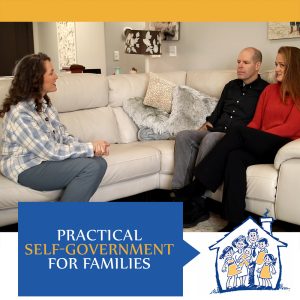Chaos? Getting Children Out The Door: The Calm Way!
Question:
Nicholeen, I struggle every day getting my children out the door for school. Leaving for family activities is hard too. I hate to admit this, but my children aren't exactly young any more either. So, there shouldn't be excuses. How do I get them out the door without raising my voice or losing control? It's so frustrating.
Answer:
No matter the ages, trying to get a family out the door on time for school or family appointments is probably one of the hardest moments in the day.
Why is it that when it's time to go somewhere that it seems the whole family structure collapses? And, what does this do to a family? Also, is there any way to fix this damaging family habit?
Why Does The Family Structure Collapse When It's Time To Leave?
Most families develop a method of communication for day to day issues like giving instructions for chores to be done or disagreeing in an appropriate way. But, when the family has to get out the door by a certain time, the healthy communication structure that the parents are working on in the family can get replaced by anxiety.
Anxiety is possibly one of the most powerful feelings our bodies have. The only thing more powerful than anxiousness is calmness. Calmness really does have the power to over come anxiety.
When a parent worries about being late and getting all the things and people in the car, the parent has anxiety. They may call it stress or worry. It is all the same thing.
When a child doesn't feel ready to leave or can't find something necessary for the trip they become anxious too. Also, even if the child doesn't feel rushed, just being around the parent who has anxiety could encourage anxiety in the child as well.
To live according to a structure a person has to make deliberate choices until those good choices become habits. When a family structure falls apart during anxiety moments it is because the parent or child started acting based on emotion instead of conscious thought and deliberate action.
What Does The Collapse Of Structure Do To The Family?
When families lose their structure they are not free. They don't have anything to back up their parenting or their interactions, so they quickly become frustrated with each other. Relationships become selfish and strained and healthy communication stops happening.
Healthy communication is based on calmness, trust, love, acceptance of family roles, and assertive communication skills.
When a person stops communicating in a healthy way they become very selfish. They start wanting to force the other person to do what they are told. Then power struggles start and children and parents damage their relationships.
Without a good relationship parenting often looks like power struggling. And, power struggling is just another way to say emotional manipulation.
If leaving for school each morning feels like world war three then something definitely needs to change.
So, how can parents teach children to act deliberately and calmly in normally stressful moments?
How To Fix This Damaging Family Habit
The way a family leaves the home really is a habit. From a very young age we form certain thought processes in relation to different regular moments in our lives. For instance. When I get dressed in the morning, I always put the same leg in my pants first. I always hold my shirt a certain way to put it over my head. Why do I do this? I have no idea. It is a habit.
This same principle applies to getting out the door in a calm, organized fashion; it's a habit. If a parent is a last minute organizer at departure time, then children will likely develop the habit of also becoming last minute organizers; which will lead to stress at go time. This means the whole family needs to change the way they process when it's leaving time.
To change this family habit, the family needs to learn a few communication skills. First, teach children how to follow instructions. There are fivesteps to following instructions that healthy communicators just do naturally.
-
Look at the person
-
Keep a calm voice, face, and body
-
Say “okay” or disagree appropriately
-
Do the task immediately
-
Check Back
Even very small children can learn this skill. Here is a video of three year old Hudson telling how to follow and instruction.If a child can't do all these steps, they really don't know how to follow instructions. And, if they can't follow instructions from their parent, then getting out the door will not go well at all.
So, step one is to teach your children how to follow instructions so that they can use the skill at the right time.
Step two is to practice the skill in a role play setting often so that they can have practice doing things the right way.
Step three is to pre-teach before the craziness begins. This means that you describe what needs to happen, what the positive and negative consequences are and maybe even review the steps to following instructions, before the leaving process begins.
This usually sounds something like, “Right now we need to get out the door to school. We need to do all the steps to following instructions. Do you remember the steps?…If you don't follow instructions the negative consequence will be……If you choose to say okay and follow instructions, the positive consequence will be……okay?”
Step four is to have a positive consequence for when it goes well. So, praise them a lot and have a treat bag or something motivating until the new skill is mastered.
Step five is to be consistent about them doing all the steps to following instructions when instructed by you. Do a calm correction if the child chooses not to follow an instruction.
Calm corrections should be more about describing what happened and should have happened then about showing any emotion. The tone of the correction should be planned to feel safe, loving, understanding, and productive.
Success Looks Like This!
After teaching a family self government skills one weekend, it was time to gather up all the children to take me to the airport. The mother calmly pre-taught her children about what needed to happen to get out the door on time. The children followed instructions. The mother stopped and bought them a treat for a positive consequence because they had the extra time. Everyone was happy and calm in car. Then the mother looked at me and said, “This is what success looks like! I can get used to this.”
To Learn More Self-Government Skills Or To Follow Nicholeen On her England Trip Click Here.






